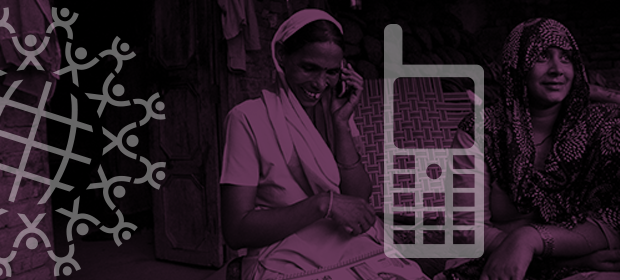Where We Work
See our interactive map


Did you know there are more than seven billion mobile phone subscriptions around the world? That means more people have mobile phones than toilets.
Mobile phones have the power to reach people in places that electricity and roads don’t yet reach. The potential to harness this connectivity for better health is there. But can we reach this potential?
This summer during my fellowship at IntraHealth International, I cataloged the family planning mHealth applications designed to support health workers in their jobs. If you’re familiar with the mHealth field, you know this was no small task.
“Simple enough,” I thought when I got started. Wrong.
In the mHealth Working Group project database alone, I combed through over 100 family planning projects. They ranged from applications that assist community health workers in counseling women on family planning to those health workers can use to update family planning supply stock via SMS.
I eventually found documentation online for 35 applications that fit my criteria.
The purpose of this activity was to understand how mHealth is currently being used in family planning programs and where there are gaps in evidence. Therefore, I was also tracking the evaluation indicators used to assess the impact of the projects.
“Simple enough,” I thought when I got started. Wrong.
First of all, finding assessments was like searching for a needle in a haystack. Assessments were often not linked to project pages, did not use the project name, or simply could not be found. Second, of the assessments I found, only six had assessed a change in behavior, utilization of health services, or health outcomes.
Six.
I was confused and alarmed. On top of that, I had found documentation of only four programs being scaled beyond their pilot phases.
Was I missing something? What is all of the hype about mHealth if we have not proven its effectiveness at changing behaviors or improving health services? How can we continue pouring money into thousands of pilot projects if we have not seen many go to scale?
According to a World Health Organization survey, only 7% of low-income countries implementing mHealth projects had evaluated their projects. The lack of scaled projects is not surprising, either. As traditional donors experience shrinking global aid budgets, pilot projects are not receiving enough funding to continue past the first year if the evidence does not add up quickly. And since the global health community values local ownership of mHealth initiatives in low- and middle-income countries, we need to be even more conscious of the cost and effectiveness of these programs.
It is time to get back to the basics of health program planning.
Yet, I still believe the promise for mHealth is there.
It is time to get back to the basics of health program planning. Just because a program has a digital component does not mean it is cost-effective or that it solves the problem you are hoping to solve. This is the same for traditional health programs.
There are three things we can do when planning an mHealth pilot study to give it the best chance of being taken to scale:
The responsibility of moving the field of mHealth forward rests on the shoulders of all who are involved in global development. Implementing organizations such as NGOs should make sure they are working with local implementers and governments to ensure mHealth programs meet a local need and can be sustained in the future. Donors should provide sufficient funding to rigorously evaluate mHealth projects. Local governments and stakeholders should assess and prioritize their needs for mHealth technologies and carefully choose their investments to align with their country’s objectives and goals.
Mobile coverage is well on its way to reaching saturation.
And private-sector companies should seek out partnerships with NGOs and governments to develop solutions that will add value to their businesses while changing health outcomes for the better. Mobile coverage is well on its way to reaching saturation. Let’s not wait any longer to harness the potential of technology that’s already at the fingertips of so many around the world.
Get the latest updates from the blog and eNews




